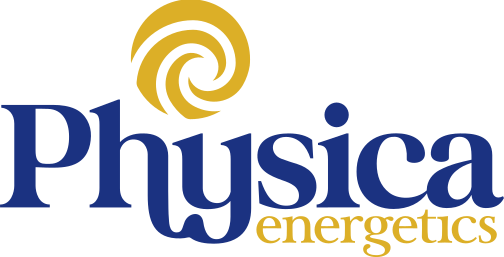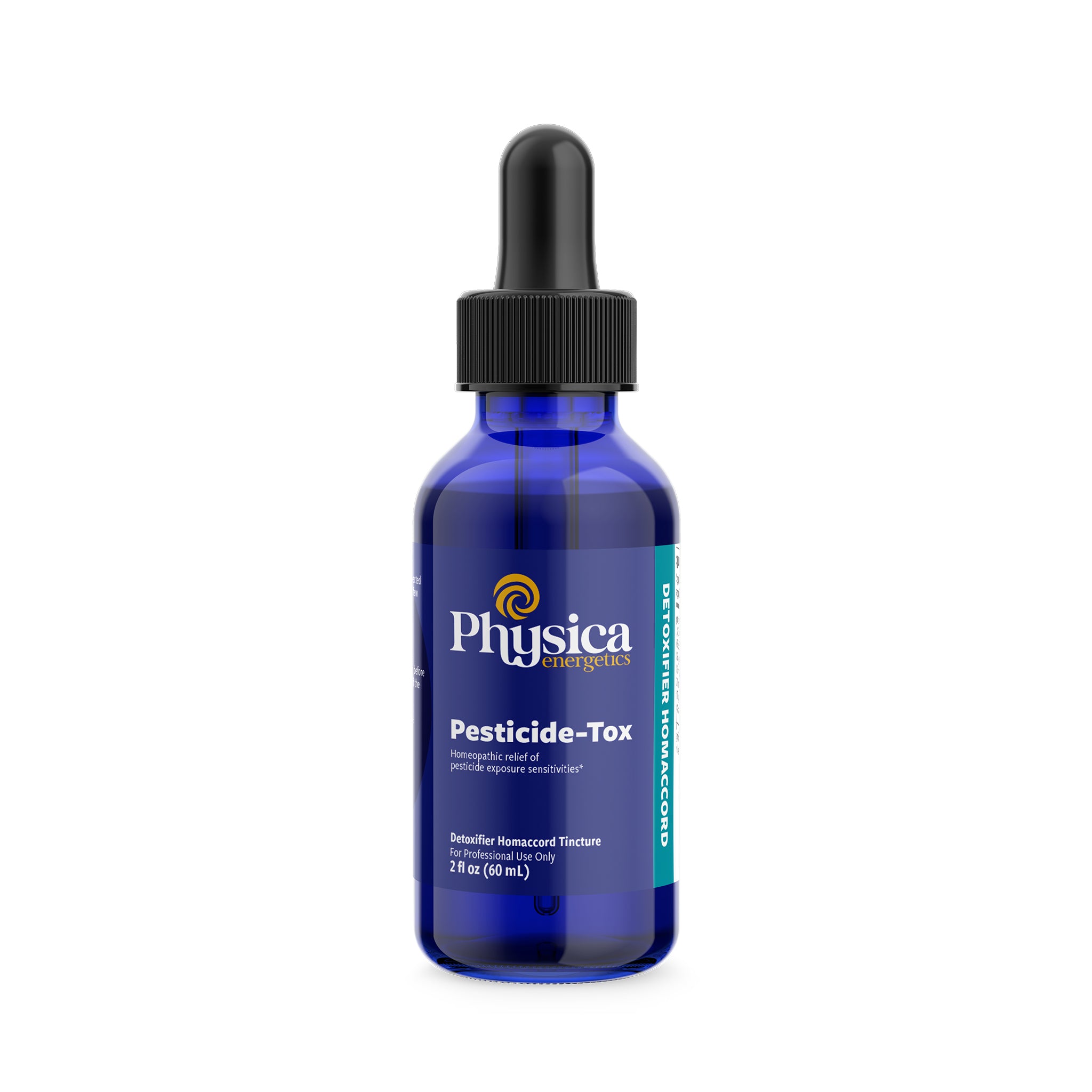The Impact of Glyphosate

In 1974, Roundup, a weed killer, was invented by Monsanto - now owned by Bayer - with glyphosate as its primary chemical herbicide. Roundup became a part of conversation starting in the 1990s, and almost 30 years later, it was the most used weedkiller on the planet.
During a recent interview with Dr. Zach Bush, MD, in the Rich Roll podcast entitled The Future of Homan & Planetary Health, Dr. Bush threw out some staggering numbers about glyphosate use:
- 300 million pounds of glyphosate used annually in the US
- Four billion pounds used globally goes into the soil, and water systems.
Dr. Bush said that this toxic chemical is in our soil, our water system, and therefore the food we eat and the water we drink—in eighty-five percent of rainfall and eighty-five percent of the air we breathe. Listen to Dr. Bush’s explanation of cellular communication from 34:00 minutes and specifically talk about the chemical implications of glyphosate and the injury of isolation at 37:00. The interview and conversation is an excellent explaination of how glyphosate breaks the tight junctions in the gap junctions creating isolation leading to leaky gut or gut permeability.
Sidebar: for all the sequencing geeks out there, Dr. Bush mentions the Fibonacci sequence at 39:45 minutes in and again at 41:40 – our ears perk up at the mention as it’s the foundation of how Dr. Cass formulates the Physica Energetics product line
We can’t get away from it, and more and more research is showing the negative consequence of this chemical in our ecosystem; externally all over the planet, and internally in our bodie
“The only laboratory relevant to you is your body.”
Dr. Zach Bush, MD
Research to help your understanding further glyphosate:
- Toxic Effects of Glyphosate on the Nervous System: A Systematic Review.
- Glyphosate, pathways to modern diseases II: Celiac sprue and gluten intolerance.
- Glyphosate infiltrates the brain and increases pro-inflammatory cytokine TNFα: implications for neurodegenerative disorders.
- Childhood exposure to common herbicide may increase the risk of disease in young adulthood.
Any Google search shows more emerging research. If you are not testing your clients or patients, glyphosate toxicity may not be top of mind as you see gut issues, sluggish detoxification issues, and even non-alcoholic fatty liver disease (NAFLD). It is an issue that, in the world that we live in, certainly needs to be addressed with each and every patient
Obstacles to Cure and Glyphosate
Cellular communication pathways, in part, employ “cross-talk.” If communication is disrupted due to microbiome damage caused by glyphosate, the immune system dysfunctions, creating a loss of immune intolerance, symptoms of EBV, allergies, Lyme, and RV (retroviral) activation. Glyphosate is an endocrine disruptor associated with learning disabilities and ADHD.
Master Formulator Dr. Robert Cass and our colleague, Dr. Davis Brockenshire, D.C., Functional Medicine Expert, have shared more insight into the GPS-Tox. Dr. B shares how to incorporate Holo-Plexus in your protocol and specifics about our newer products in the videos found on the GPS-Tox page below (be logged in first to view the two videos found in the PRESENTATION tab).
Concerns and the Most Contaminated Foods
Glyphosate is a widely used herbicide sprayed on commercial crops of wheat, barley, oats, flax, peas, soybeans, and sugarcane. Additionally, it is used by professional landscapers, groundskeepers, and home gardeners. Pay special attention to golfers, and those living near parks, golf courses, and crop fields.
Here are some key concerns associated with glyphosate:
Carcinogenicity: There has been significant debate and controversy regarding the potential carcinogenicity of glyphosate. The International Agency for Research on Cancer (IARC), which is part of the World Health Organization (WHO), classified glyphosate as a probable human carcinogen in 2015. However, other regulatory bodies, such as the U.S. Environmental Protection Agency (EPA), have not classified it as such. (Yet)
Environmental impact: Glyphosate has been found to have negative effects on the environment. It can contaminate soil, water bodies, and food crops, leading to potential harm to non-target organisms, including animals and beneficial insects. There are concerns about its impact on biodiversity and ecosystem health.
Health risks and toxicity: Glyphosate exposure has been associated with various health risks. Studies have linked it to adverse effects on human health, including liver and kidney damage, disruption of the endocrine system, reproductive effects, and potential developmental effects. It is important to note that the extent and significance of these risks are still subject to scientific debate.
Herbicide resistance: Prolonged and extensive use of glyphosate has led to the development of glyphosate-resistant weeds, which poses challenges for farmers and agricultural practices. This has resulted in increased herbicide use and the need for alternative strategies, which can have additional environmental and economic consequences. Regulatory considerations: The regulatory landscape surrounding glyphosate is complex and varies among countries. Some countries have restricted or banned its use, while others still permit it. Ongoing scientific research and evolving regulatory decisions contribute to the ongoing debate and concerns surrounding its usage. It's important to stay informed about the latest research findings and regulatory updates regarding glyphosate. As a healing arts practitioner, consider discussing these concerns with your patients and advising them on potential risks and precautionary measures. Additionally, encouraging a holistic approach to health that includes minimizing exposure to potentially harmful substances can be beneficial.
Food Sources
Glyphosate can be found in various food sources, but it's important to note that the levels can vary depending on factors such as farming practices, geographic location, and regulatory standards. Here are some examples of food sources that have been reported to contain glyphosate:
Genetically Modified Crops: Genetically modified (GM) crops such as soybeans, corn, canola, and sugar beets are often cultivated using glyphosate-resistant seeds. These crops are engineered to withstand glyphosate application, allowing farmers to use the herbicide to control weeds without harming the crop itself. As a result, residues of glyphosate may be present in GM crop-based food products like soybean oil, corn syrup, and processed foods containing these ingredients.
Non-GMO Crops: Glyphosate may also be used as a pre-harvest desiccant on non-GM crops like wheat, oats, and barley. This practice helps to dry out the crop before harvest, making it easier to process. As a result, traces of glyphosate can sometimes be detected in products made from these crops, such as bread, cereals, and other grain-based foods.
Fruits and Vegetables: Glyphosate residues have been found in certain fruits and vegetables, although generally at lower levels compared to GM and non-GMO crops. This can occur due to the direct application of glyphosate or through exposure to contaminated soil or water. Common examples include apples, grapes, oranges, strawberries, lettuce, and spinach.
Legumes and Pulses: Some legumes and pulses, such as lentils and chickpeas, have been reported to contain glyphosate residues. These crops may be treated directly or be exposed to glyphosate through soil or water contamination.
It's important to understand that regulatory bodies in different countries establish maximum residue limits (MRLs) for glyphosate in food products to ensure safety. These limits are set based on scientific assessment and aim to minimize potential health risks.
Organic farming prohibits the use of synthetic pesticides, including glyphosate. However, it's important to note that even organic products may have minimal traces of glyphosate due to factors like environmental contaminatio
When to use Pesticide-Tox and GPS-Tox
We often received questions about GPS-Tox and when to use it, and Pesticide-Tox. We asked Crystal Cass, our Vice President and head of our Clinical Assistance team, to answer and help understand the difference, when to use it, and what other products to consider.
Pesticide-Tox is designed with a focus on a wide range of herbicides, insecticides, fungicides, and pesticides and includes botanical support and sarcodes to support drainage and to assist and help detoxify, repair, and restore.
GPS-Tox specifically targets glyphosate in an ascending homaccord range (to 1M) and provides homaccord homeopathic corrections for deep drainage and detoxification for the damage caused by its use. GPS Tox also supports drainage and can help to detoxify, repair, and restore.
Also, GPS-Tox works at the level of the liver’s phases of detoxification. Glyphosate has been shown to inhibit the cytochrome enzyme (P450) of Phase one (think HepataGest Powder).
When using either product, Dr. Robert Cass would recommend using Holo-Plexus and Symbiome CMF-50B. Both products would be served by including a drainage remedy: Lymph 1, 2, or 3 or Drainage Milieu to provide adequate drainage for clinical success.
A homaccord usually contains several homeopathic remedy ingredients in different potency chords; often, 2 - 4 are included in low, medium, and high potency that, gives a broad range for effectiveness and can lessen the possibility of a healing crisis or aggravation of symptoms. Many of our practitioners use Symbiome CMF-50B and add any specific gland, organ, or system support.
Pesticide Tox and GPS-Tox can often be used together or individually, depending on the case. In cases of toxicity, many need both supportive products.





